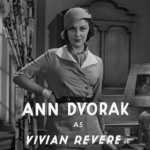 |
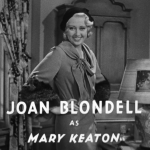 |
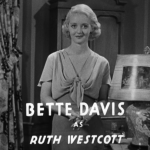 |
| Vivian Revere Ann Dvorak |
Mary Keaton Joan Blondell |
Ruth Wescott Bette Davis |
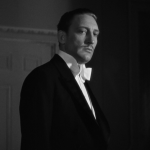 |
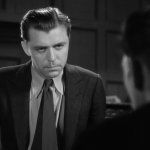 |
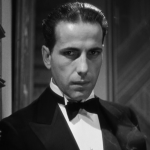 |
| Robert Kirkwood Warren William |
Michael Loftus Lyle Talbot |
Harve Humphrey Bogart |
| Released by Warner Brothers | Directed by Mervyn LeRoy |
||
Three on a Match: The Perils of Free and Easy
“Will you stop remindin’ me of Heaven when I’m so close to the other place?”
Three on a Match is an unusual set of contradictions. Disliked by most of its principles, it was loved by the censors. Denounced by critics and ignored at the box office, it’s become a cornerstone for serious cinema students when exploring the movies of the early 1930s. It embodies the Warner Bros. style while showcasing strong women characters all with irrepressible momentum. It is the very epitome of a company whose credo was, as relayed by supervisor Robert Lord, “Anything goes as long as it’s entertaining and interesting.”
Three on a Match is assuredly both those things. Along the way, there are also drugs, passionate extramarital sex, grifting, divorce, kidnapping, and attempted child murder. It’s a mix of topical issues and frustrated social standards morphed into a searing drama about addiction and maternal love, all told in a breakneck 61 minutes.
The movie begins in a New York public elementary school. (Modern parents, be prepared for a bit of a culture shock.) Three girls are friends, despite radically different temperaments. Bookish Ruth is nerdy and quiet. Smiling Mary is popular with the boys because of her carefree attitude. And Vivian wants to be the center of attention by any means necessary.
They graduate and head to different educational institutions. Bette Davis’ Ruth is trained as a typist in a rather mechanical fashion. Joan Blondell’s Mary ends up in a reformatory (with future co-star Glenda Farrell also hanging about to make wisecracks.). Meanwhile, Ann Dvorak’s Vivian goes to a finishing school, though she’s more concerned with reading her friends dirty stories than much else. As such, it’s a Teflon life for Vivian, completely hollow for her besides a few vicarious thrills.
Ten years later and Vivian runs into her old school friends one afternoon. The three share lunch—and a match to light their cigarettes. The girls gossip, tease, and talk, all in a wonderfully natural moment. Mary is a partial success as a chorus girl, Ruth works an unpleasant job as a typist, and Vivian is married to powerful lawyer Robert Kirkwood (William). Vivian admits to being restless, while the others remain jealous. But Vivian, who has gotten the best in life without having to put in much effort, has turned cold. Later in the day, she even fakes sleep to avoid sex with her husband. And when her young son, Junior, calls out for her, she’s quick to pass the duties onto someone else.
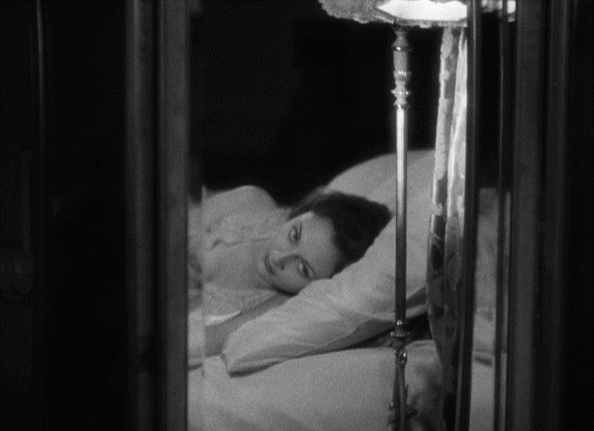 Vivian and Kirkwood have a talk. She needs to find a spark in her life. Vivian decides to take her son to Europe in hopes of rekindling that connection to the world, but, as fortune and bad luck would have it, she runs into Mary and a raucous party on the ship. That’s where she meets Michael Loftus, a charming man with a dark side. The two flirt, then dance, then gaze into each other’s eyes.
Vivian and Kirkwood have a talk. She needs to find a spark in her life. Vivian decides to take her son to Europe in hopes of rekindling that connection to the world, but, as fortune and bad luck would have it, she runs into Mary and a raucous party on the ship. That’s where she meets Michael Loftus, a charming man with a dark side. The two flirt, then dance, then gaze into each other’s eyes.
Both tipsy, Michael realizes he has to pique her interest. He looks at her hoity-toity background and sniffs, “You don’t know what life is.”
“Well, I suppose you could show me,” smiles Vivian. “I haven’t met a man yet who hasn’t tried.”
His forceful grab and kiss snap her back to her schooldays and beyond—Michael is the proverbial bad boy she’d never knew she’d always wanted. Vivian and her son depart the boat before it leaves dock. A few days later and she’s still hiding out in a hotel with Michael, her son neglected and her desire to party, drink, and live a carefree life overriding most common sense. Mary can’t stand it, though, and calls up Kirkwood. He retrieves the child from his strung out wife, and seeing a cigar case on the bedside table with another men’s initials on them, calls the marriage off.
Kirkwood, touched by Mary’s kindness, becomes friends with her and Ruth. As his divorce with Vivian goes through, Mary takes her place as his wife. And the switch is complete.
There were no firm start times for films in the days of Three on a Match, so if you were just joining the audience at this point, 43 minutes into the movie, you’d be treated to a recap from two deliverymen on the street. A few years ago, three friends met for lunch. Now one is married to the other’s ex-husband. Those two women are across the street now, and the ex-wife is asking the current wife for money.
Why? Michael’s gone in deep to the mob. Headed by Ace, and played by Edward Arnold with a nasty streak, they want the $2,000 Michael owes them or else. The gangsters include a young Humphrey Bogart, Allen Jenkins (in a surprisingly effective straight role) and even Jack La Rue, who would go on to make Miriam Hopkins’ life miserable in the nasty Story of Temple Drake.
The reasons for Vivian and Michael’s financial woes aren’t left to the imagination. Michael decides to kidnap Junior to get the money, and we find Vivian in a panicky, denigrated state. When the gangsters show up to take over the kidnapping operation, Mary keeps rubbing her nose, which they mock with a smirk. Vivian’s a hophead and, as the kidnapping ordeal drags on, her withdrawal symptoms kick in. She screams and cries from the other room, the noise matched by the hungry wails of Junior. Meanwhile, the police are closing in, day by day, minute by minute, and the gangsters show the pressure as food becomes scarce and the only choice they have to escape comes closer to closer to quieting those wails from both Vivian and Junior once and for all.
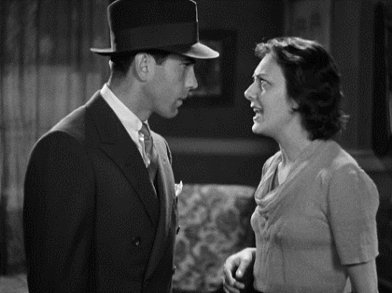 The story follows the three women, but, despite the charisma and chops of Blondell and Davis respectively, it’s Dvorak who gets to really let loose in her role. Vivian’s story is a warning about the dangers of an easy life. While Mary learns from her hard won lessons about respecting herself and others from her time in the reformatory and experience on the streets—but still remains fun, mind you—Vivian never connected with other people in the same way. Her story is a testament to how life can feel a little hollow to some people, like a grand façade. When it finally breaks, there’s no indication from Vivian of regret or anger—but a steady march towards a more enlightened life in oblivion, with plenty of narcotics to aid the journey.
The story follows the three women, but, despite the charisma and chops of Blondell and Davis respectively, it’s Dvorak who gets to really let loose in her role. Vivian’s story is a warning about the dangers of an easy life. While Mary learns from her hard won lessons about respecting herself and others from her time in the reformatory and experience on the streets—but still remains fun, mind you—Vivian never connected with other people in the same way. Her story is a testament to how life can feel a little hollow to some people, like a grand façade. When it finally breaks, there’s no indication from Vivian of regret or anger—but a steady march towards a more enlightened life in oblivion, with plenty of narcotics to aid the journey.
Dvorak has no problem with the spirited, seamier side of this personality. That mixture of carnal delight that washes over her as she meets Talbot’s character is electric. Her degradation as she slips easily into the decadent world of sin and alcohol is greeted with a boozy grin. When her temper flares, it’s immediate and strong. When she needs something, she’s as manipulative as any junkie. She can be meek—but a knowing smirk lurks just beneath.
It’s because of this flair that the film feels so real. “Dvorak played it like an addict,” noted Mick LaSalle. “Every nerve raw.” There’s nothing over the top or silly about her performance, but it strikes that right note of both desperation and determination.
Oddly enough, though Three on a Match remains along with Scarface as one of the defining films of her career, Dvorak herself didn’t think much of the movie, barely mentioning it in correspondence she kept with her mother. Ann only called the film, “another feature whose title slips my mind.”
The least flashy character of the titular trio is Bette Davis’s Ruth Wescott. She seems to be there to function as a middle between the other women’s extremes: she’s not hard luck nor privileged. What’s interesting is that we know that she’s the smartest of the trio, graduating valedictorian of her class and jumping right into the working world as a typist. She’s the only character who shows no expressed interest in men (with at least one source I’ve found guessing that she may be a coded lesbian), though she does suddenly finds herself charmed by Junior, the Kirkwoods’ son.
Her turn from typist to nanny could be seen as a continuation of the film’s themes of latent maternity in women. In fact, Dvorak’s character encounters the same sort of thing but in a much more sudden, uglier situation late in the film. However, here it’s shown to be just as much about choosing your own path over those imposed on you. Ruth’s intelligence sent her into the business world, which, like the other characters, she discovers that something she’s been given on a silver platter unfulfilling in an intangible way. When she works with Junior, she finds an alternate path in life, one that allows her to read in the park and spend time with her good friend, Mary. It may not be a forcefully feminist route, but Ruth does what makes her happy despite the financial implications, something many people who chase their passions can relate to.
Davis herself found this movie, like many of her early roles, an unpleasant experience. She felt that the part was irretrievably bland and dismissed the movie. Davis also held a grudge against director Mervyn LeRoy after he was quoted to the press as believing that Blondell was due to be a big star, while also admitting that he felt that Davis wouldn’t make it in Hollywood.
Joan Blondell, of course, did become a big star, though not quite in the same hemisphere as Davis, and she would make her name in comedies rather than dramas as LeRoy had predicted. Blondell, like Dvorak, belongs in the pantheon of pre-Code actresses, making 27 movies during those four years with a good share of avowed classics among them. That included fare such as female gangster movie Blondie Johnson, conman lark Blonde Crazy, and a string of Busby Berkeley musical comedies including Footlight Parade, Gold Diggers of 1933, and Dames.
The toughest trick Blondell has to pull in Three on a Match is switching from streetwise to sweet, but the script gives her plenty of chances to show her sympathetic side. The early scenes in the reformatory help, showcasing Mary as someone who knows what she’s doing is wrong and that she’s merely misunderstood—a girl who loves a good time but has enough sense to avoid the real pitfalls of life.
One of the central conceits of the movie comes in the film’s middle as Mary and Vivian switch places on the social ladder. Swiftly, Vivian’s addiction and thrill-seeking lead her to the dredges of society, and, unlike Mary, she has no filter to control her temperament. Mary, on the other hand, has learned empathy through her own trials, helping her to understand Vivian’s husband and his needs far better than Vivian had.
Is the movie a fantasy? It’s almost ludicrous to even ask. For the audience of the day, burdened by the Depression, they no doubt saw shades of the world they lived in. It’s likely that the mostly urban, working class audience the studio played to would see themselves in Mary, as her aspirational story is measured and sweet. Meanwhile, they also undoubtedly recognized quite a bit of Vivian as well, a person in an ethical free fall whose addictions get the better of them. Dvorak’s redemption at the end would soothe them—we see that even people at the bottom share some basic level of humanity.
That Warren William shows up in the film is no big surprise—the great Warner Bros. movies of the time read much along the same lines as his filmography. What does surprise is his character, Kirkwood. Lanky William, often playing immoral scoundrels who destroy peoples’ lives and still somehow summons the audience’s sympathy for doing so, has the straightest, most white bread part of the picture.
While he’s a rich, high powered lawyer in this go around, he’s an honest one, mostly concerned with the welfare of his son. His Kirkwood may actually be one of the more compassionate fathers of the entire pre-Code era, clearly trying to understand and help his wife while also gleefully doting on his son. His panic when the boy disappears late in the movie is palpable.
On the subject of that kidnapping, it’s important to discuss the context of Three on a Match. Just three months before this film went into production, 20-month-old Charles Lindbergh, Jr. was kidnapped from his home. His father, Charles Lindbergh, had only a few years before had become iconic after his remarkable solo flight across the Atlantic Ocean captured the nation’s imagination.
The kidnapping of the younger Lindbergh set off headlines and panic as outrageous events followed— from coded, cryptic notes left in the newspaper to an extensive multi-state manhunt. The decaying body of Lindbergh Jr. was found in May, and the mystery around these events were still unfolding as the film came out, offering a chilling parallel for the film’s final act. In Three on a Match, the audience could gape in horror as they followed a kidnapping that spirals out of control from its nasty beginning to horrifying end.
It’s because of this that Jason Joy, one of the chiefs at the Production Code Administration, became a champion of the film. He felt that showing the murderous gangsters coming to a grusome punishment for their participation in the kidnapping was exactly the right message at the right time. “[It] seems to me there is clearly presented a moral to the effect that kidnapping is one business the American people will rise, as one man, to overthrow.” Joy even went so far as to use the PCA’s muscle to help get the movie past the strong censor boards in New York, believing the film would touch a nerve with its audience. This makes Three on a Match one of the rare films of the time whose controversial content was condoned and encouraged by the PCA, a strategy, unfortunately, that had no effect on its tepid box office.
Director Mervyn LeRoy, who already had Little Caesar under his belt at this point and in the next few years would stand behind I Am a Fugitive from a Chain Gang and Gold Diggers of 1933, is among the very best in Warners’ stable at the time. He was an efficient director, and clocks in with around two dozen credits during the four years of the pre-Code era. But not all quick directors lacked style.
Three on a Match is filmed with the usual urgency of a Warner Bros. product, but added in are two important factors. First is LeRoy’s masterful use of the close up and kinetic action. In a lot of contemporary films, camera setups were fairly static with heavy use of medium shots. LeRoy shakes things up, careful to keep tight on Ann Dvorak’s face during crucial moments, such as her embrace with Talbot at the climax of their evening on the boat. LeRoy gets even closer when we see Dvorak, makeup-free, when she waits outside the shop for her friend—and the woman married to her ex-husband—to beg her for money.
These quiet moments are matched with LeRoy’s careful attention to how the speed of the actors should be reflected within the camera. Sometimes this is used to emphasize humor, such as when Blondell is bopped with a beach ball and the sped up film humorously emphasizes her fall on the sand. Most other times, though, this is cleverly used to indicate excitement or terror. Dvorak’s initial dance with Talbot, told through looks, sees the camera whip along the floor with their close movements. Later, the moment when her kidnapped son arrives at her dingy apartment has her run toward the stationary camera with the boy’s head in the foreground. She bobs up and down as her drug-addled brain tries to understand what’s happening, and the camera keeps her panic in focus. These moments draw the film to Dvorak, where her twitches highlight her as the center of attention and the unquantifiable, uncertain reality she clings to.
The second factor in setting this film apart would be the film’s reliance on montage to establish not just the time of events, but the specific attitudes of that time as well. Rather than just focus on political headlines, we’re presented a number of colorful asides as the years roll on. As the film begins in 1919, we’re treated to fashion news as the women’s swimsuit becomes shorter and the amount of skin acceptable to be shown grows exponentially. There are also sports scores, and the old Warners standby—headlines about how the Depression is ending, arriving once a year post-1929. The effect is both nostalgic and sardonic, a wistful earning for yesterday along with a frank acknowledgement of what rubes we all were.
That makes Three on a Match a great introductory course for the pre-Code era. Unintentionally, it’s a perfect time capsule, giving us both the context and the historical reality as well as the more fanciful, lurid one to keep things moving.
The phrase that lends the movie its title—“Three on a match means one will die soon”— comes from a superstition passed down over the years that leaving a match lit long enough would give an enemy soldier enough time to aim at the dying flame. While using the phrase as the movie title was a grim bit of foreshadowing, it also indicated where these women were in society. All three fight desperately for their happiness throughout the picture, in a world that either sees them as low-value automatons, sinful girls, or prim and proper women; for them, battling against the pre-assigned slots in society, simply being a woman was a war all of its own.
Then again, the movie even hints that the idea behind the phrase is bunk, giving the audience a newspaper ‘true story’ about how it was the brainchild of Swedish entrepreneur Ivar Kreuger. Kreuger had been one of the richest and most powerful men in the world and crafted the phrase as a way to sell more matches. (Warren William, in an odd bit of kismet, played a fictionalized take on Kreuger in a Warners The Match King earlier in 1932.) The undermining of the title again speaks to the sardonic style typical of Warners films— life is a long con, and it’s just a matter of knowing it. The audience is invited in on the joke with a smile and a shrug.
The film’s reception upon release was undeniably cool. Both The New York Times and Variety panned it, while Time magazine just listed it as implausible. Like a lot of more risqué pre-Code films, it was stuck in the studio vault for a number of years. Its low box office receipts made it unattractive for reissue and it was rarely shown television, even though the film boasted both Bogart and Davis among its cast. But the passing decades have been kind to Three on a Match.
Its release on first home video and eventually on DVD under the Forbidden Hollywood vanity label finally put the movie on the map for enthusiasts of early 30s cinema. Erich Kuersten, like many contemporary reviewers, marvels at the level of depravity the film is willing to illustrate: “Dvorak’s big tragic spiral out of control is awesome, her kid suffering from neglect to the point even Bogart’s slimy gangster is concerned […] If even the gangsters are worried about your kid, then your kid’s got problems, darling.”
Vanessa Buttino further extrapolates on the film’s emotional roller coaster, explaining, “Unlike most pre-Codes, there happens to be a moral to this story and movie audiences of the time likely left the cinema with a very bitter taste in their mouths. Not to mention a few wet handkerchiefs and a tighter grip on their children’s hands.” Adds Matthew Kennedy, in his biography on Blondell, “The idiom-filled dialogue had forward momentum and gutter-inspired realism. With its uncompromising conclusion, Three on a Match became a primal scream against the injustices visited upon women.”
Three on a Match is the epitome of Warner Bros.’ technique of the 1930s and a fascinating glimpse of what the studio could churn out. Its economy of storytelling meshes well with its jaundiced view of the world, giving us a perceptive, aching glimpse into a world nearly a century past with a fine mixture of vitality and style.
Gallery
Click for big!
Trivia & Links
- This review is also available in the 2nd issue of The Pre-Code Companion, along with plenty of other great pieces. All profits from sales of the Companion go to charity. You can also see other issues and topics covered by the series by clicking here or on the banner below.
- Something different from the usual links– references!
- Boyes, Laura. (April 2008.) “Three on a Match.” Moviediva.
- Buttino, Vanessa. (n.d.) “Three on a Match (1932).” Verite Film Site. (defunct)
- Grost, Mike. “The Films of Mervyn LeRoy.” MikeGrost.Com.
- Kennedy, Matthew. (2007.) Joan Blondell: A Life Between Takes. University of Mississippi Press: Jackson, MS.
- Kuersten, Erich. “Warren William, Titan o’ Vitaphone: THE MOUTHPIECE, SATAN MET A LADY, SECRET BRIDE, THREE ON A MATCH,”. Acidemic Journal of Film and Media.
- LaSalle, Mick. (2000.) Complicated Women. St. Martin’s Press: New York, NY.
- Rice, Christina. (2013.) Ann Dvorak: Hollywood’s Forgotten Rebel. University of Kentucky Press: Lexington, KY.
- Stafford, Jeff. (n.d.) “Three on a Match.” TCMDB.
- Viera, Mark A. (1999.) Sin in Soft Focus. Harry N. Abrams Inc.: New York, NY.
- The film’s trailer:
Awards, Accolades & Availability
- Available in Forbidden Hollywood Volume 2, along with The Divorcee, A Free Soul, Night Nurse and Female.
Comment below or join our email subscription list on the sidebar! |
||
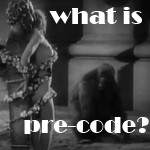 |
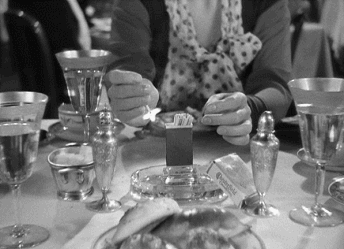 |
 |
 |
 |
|

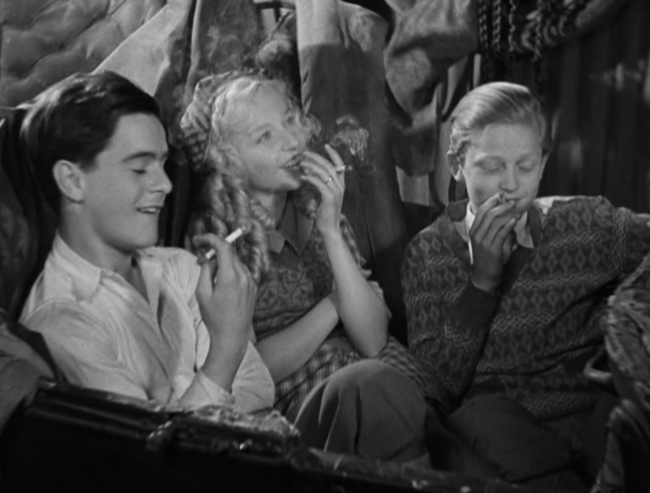
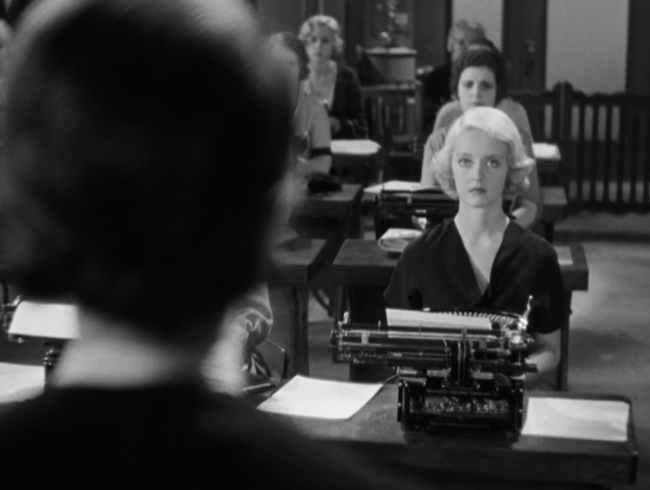
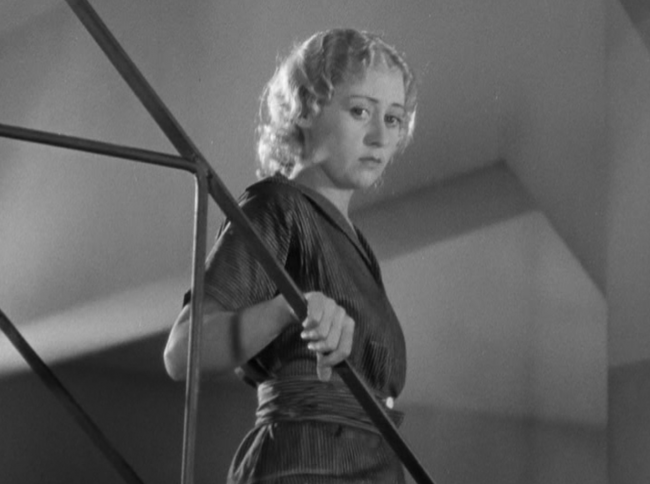

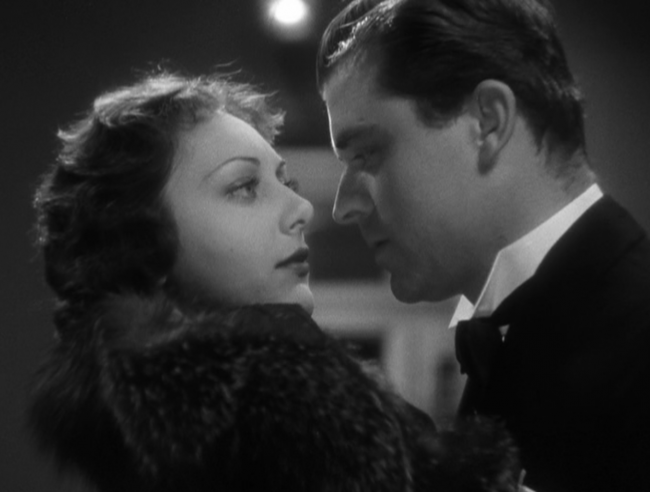
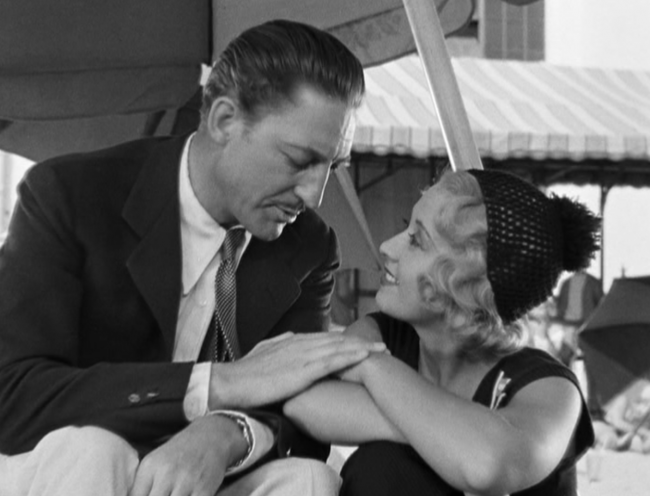


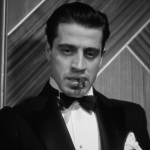

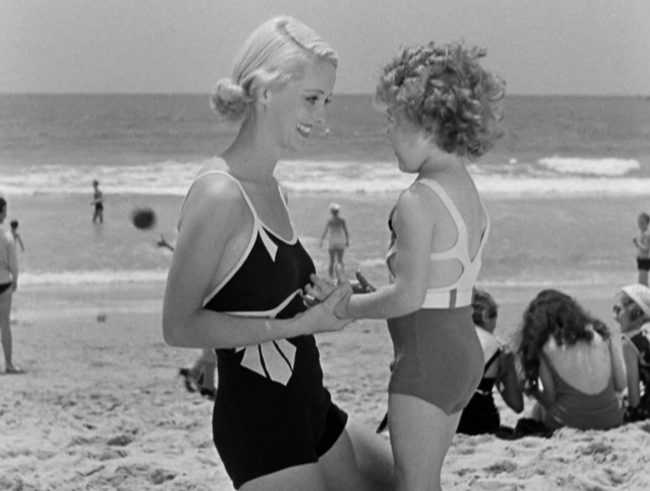
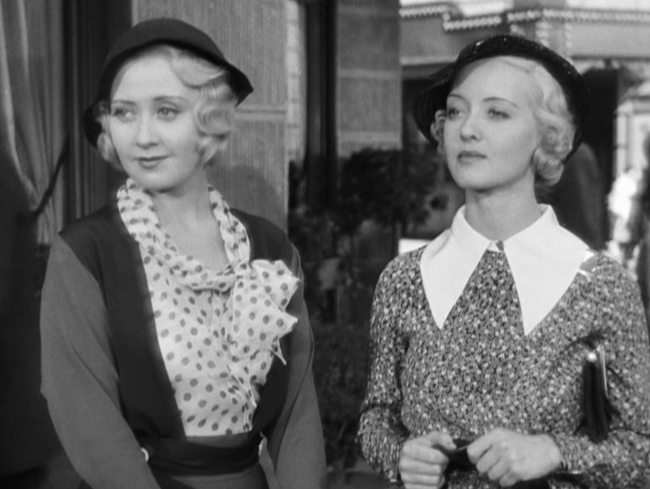
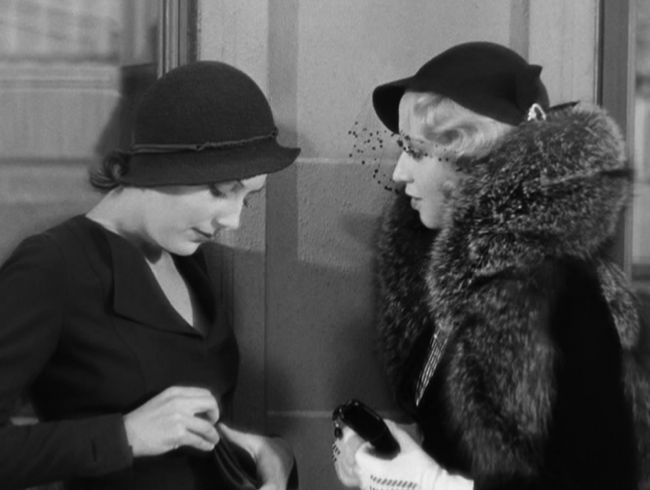
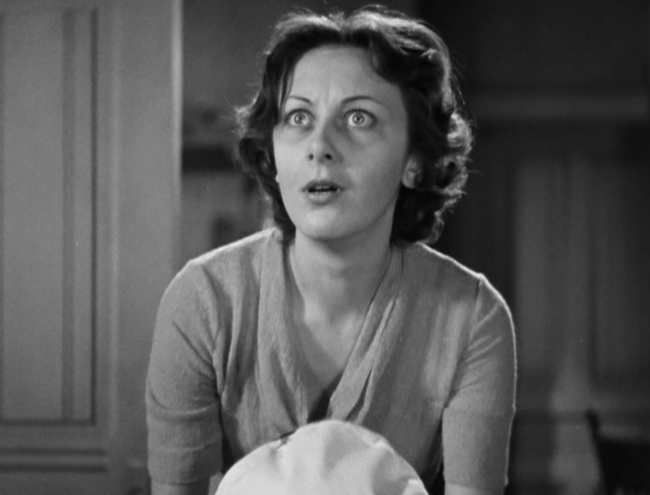
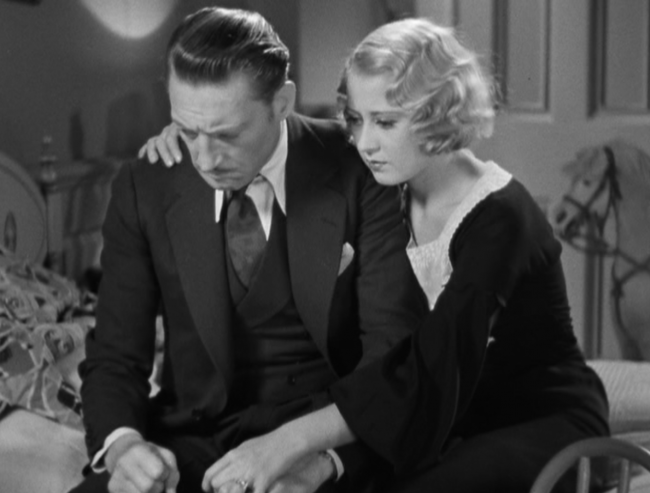
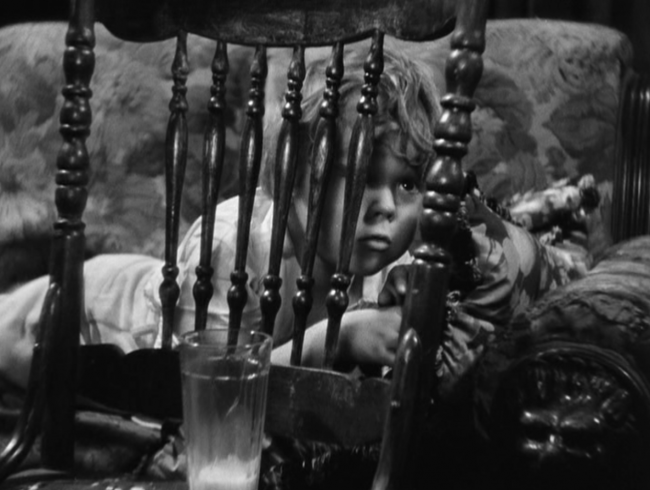
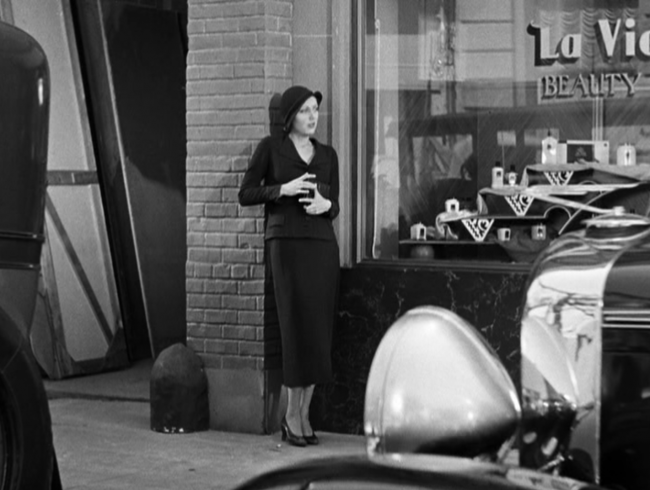
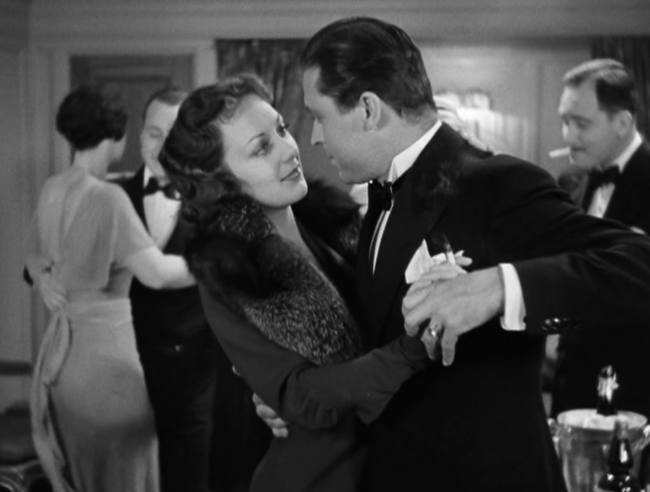
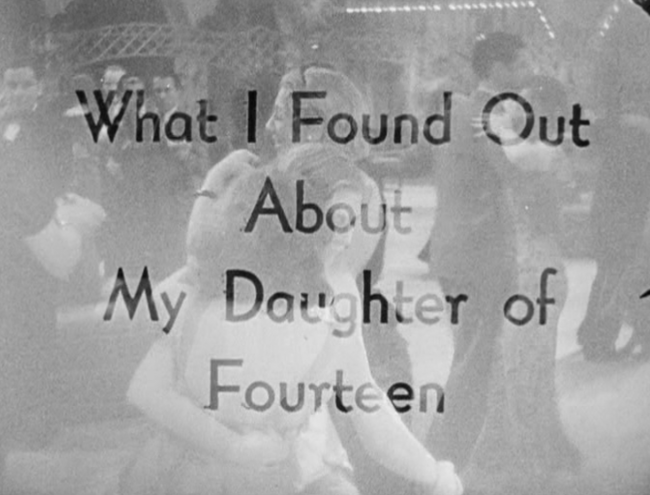
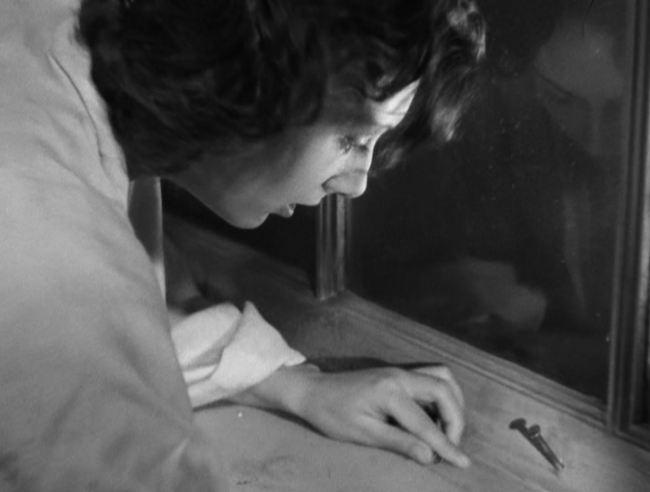

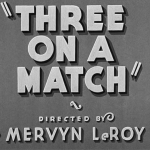
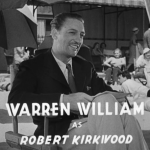

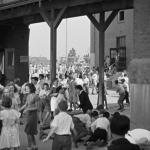
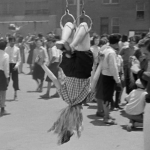
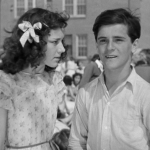

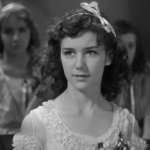
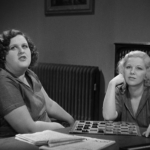
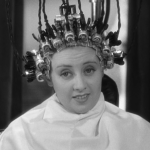
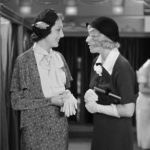
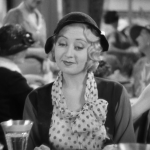
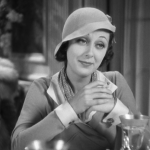
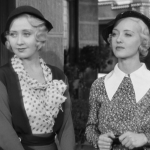
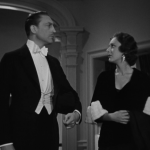
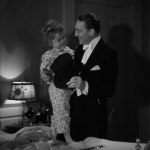
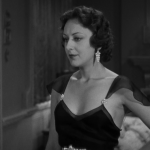
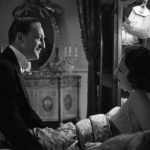
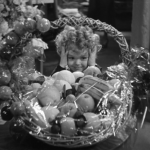
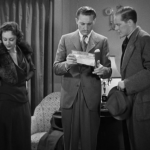
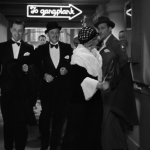
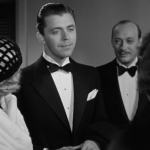
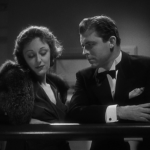
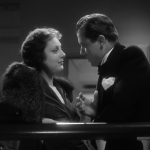
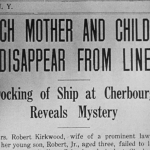
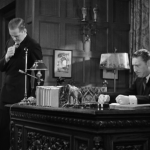
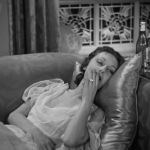
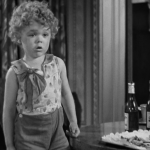
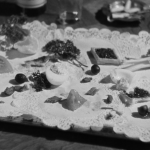
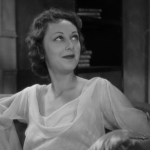

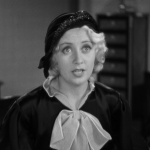
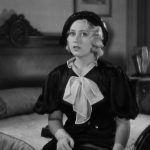
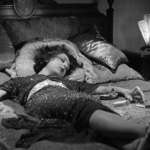
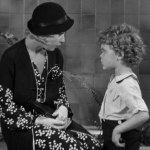
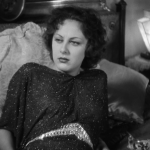
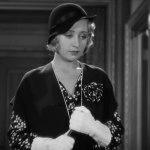
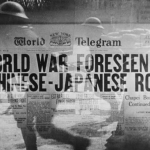
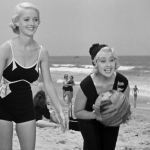

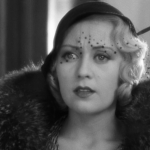
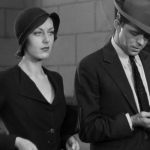

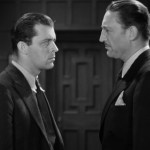
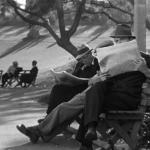
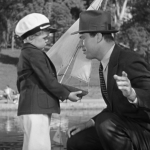
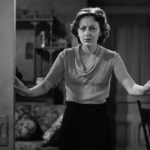
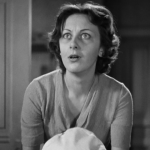
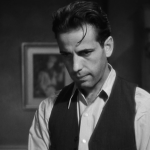
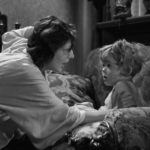
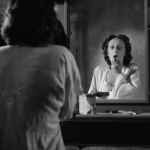
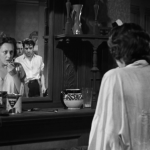
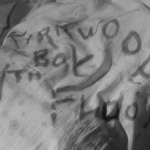
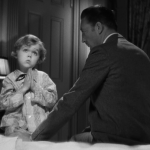
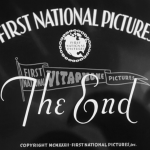

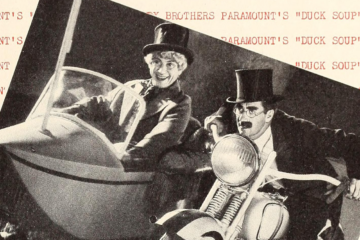


7 Comments
Sam · September 5, 2014 at 10:14 am
An unusual film. I saw it twice, recently, and one can easily tell that it is pre code.
Can someone please say exactly how the viewer knows that Anne is using drugs?
I can see it in her eyes, and depression in her, but could not tell the actual specifics.
I really like Warren William, and Joan Blondell, but I have to agree with the original NY Times review, that this in poor taste.
Oh, and it is interesting concerning the review here, one word toward the end, a little four letter one, but I will try not to report it to the Hayes office.
Danny · September 7, 2014 at 11:43 pm
The drug use is implied in a lot of ways, such as the food that’s been left to rot on the tray and Bogart playfully rubbing his nose when he sees Dvorak doing the same– she’s obviously been snorting something.
As for your last note, this review is an old one, and I used to be a bit more profane in my writing. I’m definitely mellowing out in my age though. 😉
ladylavinia1932 · May 10, 2016 at 1:15 am
This could have been a better film with a longer running time. A longer running time would have allowed for more development of the story and especially the characters.
Sarah Lea Stories · October 20, 2019 at 12:04 am
I completely agree!
Risingson Carlos · July 3, 2017 at 11:55 am
Bloody hell! That was much darker than I expected. The ending touched me emotionally much more than I expected. Whoa, Mervyn LeRoy!
Carlos Chavarin Jr. · December 24, 2018 at 3:13 pm
I first saw this at San Francisco’s, Castro Theatre some years back. The scene with Ann Dvorak at end,had the current audience surprised. I had it on my DVR queue and saw it last night, it still makes an impression.
Sarah Lea Stories · October 20, 2019 at 12:04 am
Just watched this for the third time tonight; it had been several years. It’s a highly entertaining movie, only marred by that cloying child. A little fast, but it worked.
Ruth’s character needed more to do, but she had to be included to follow that mysterious “rule of three.”
Comments are closed.